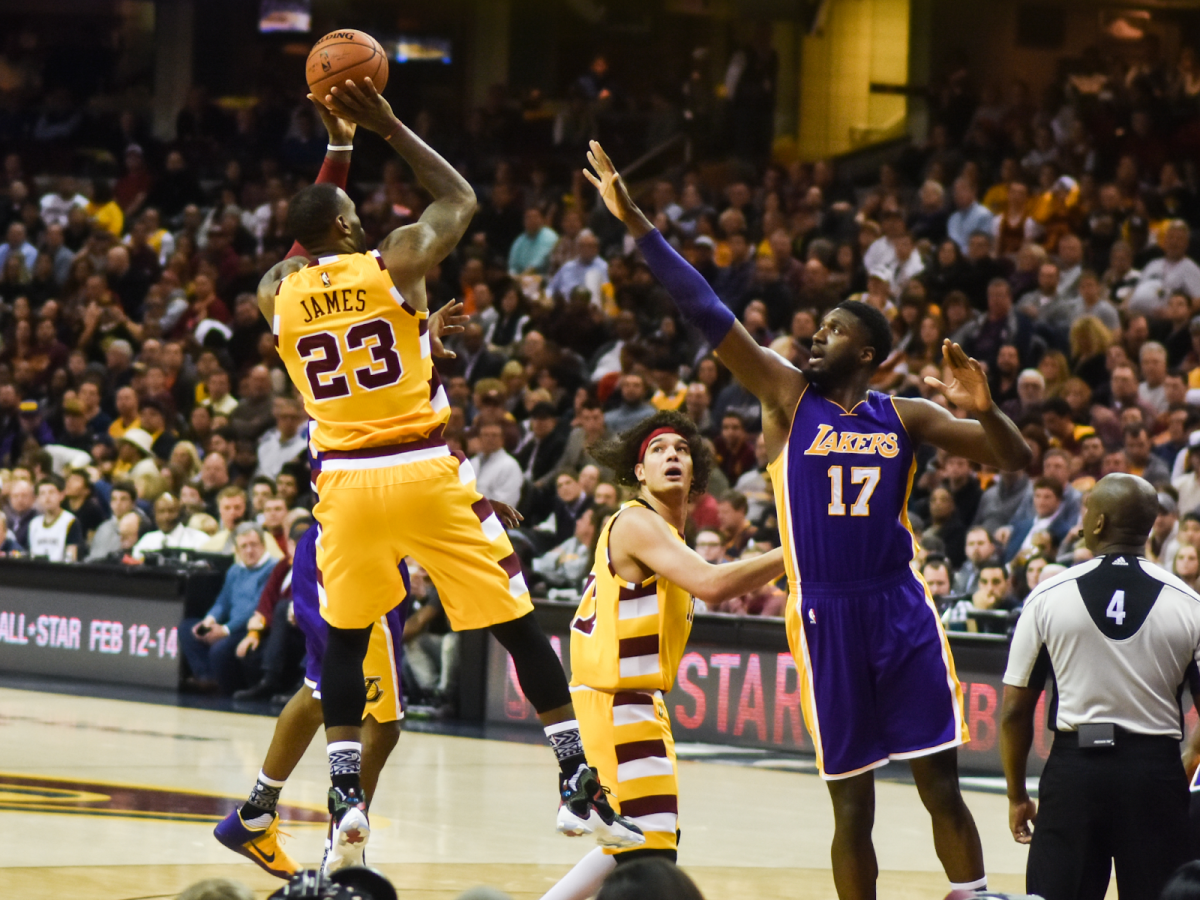On March 2nd, 1962, Wilt Chamberlain of the Warriors scored 100 points in a single game against the New York Knicks. Since then, the next-highest number of points scored in a game by a single player was 81, achieved by Kobe Bryant of the Lakers in 2006 against the Toronto Raptors. Other than these stellar performances, until recently, there were only five games with 70+ points by a single player, three of which were by Wilt Chamberlain.
Famously dominant players such as Larry Bird and Michael Jordan, of the 1980s and 1990s eras, never managed to hit the 70-point mark despite being highly effective scorers in both regular season and playoff games. For a while, it seemed that Kobe Bryant and Wilt Chamberlain would stand alone as the best single-game performances of all time.
However, five new players have scored 70 points in a single game since 2017. Four of these five performances were in the last eighteen months, with two back-to-back 70-point games occurring four days apart in January 2024.
This begs the question, why are players starting to score so much again?
To understand how scoring has been facilitated in recent years, we need to go all the way back to the era of Wilt Chamberlain, the early to mid-1960s, when the best scorers were still incredibly efficient. Players like Oscar Robertson, Bill Russell, and Wilt Chamberlain were all averaging 30 or more points per game. If we stop here, it would be reasonable to assume that players back then were just as good as they are now and that scoring this much nowadays makes sense. However, a little bit of quantitative and qualitative analysis tells us otherwise.
First off, the best players simply play more minutes per game. To emphasize this point, we can compare Oscar Robertson and Luka Doncic, two well-rounded guards – players who focus on passing more – who each averaged 30 or more points, along with more than nine assists and rebounds. Robertson was one of the best players in the 1962 NBA season, where Chamberlain put up his historical performances, and Doncic is currently top-5 in the league in terms of MVP voting. These players are both some of the best of their time, yet Doncic is averaging four more points per game than Oscar Robertson did in the 1962 season. The stunning variance is that Oscar Robertson played 44.3 minutes per game on average, whereas Luka Doncic plays less than 35 minutes a night and has nearly identical stats.
Another problem with equating the two eras is that the average skill level per player is just much higher nowadays. For example, the three-point line wasn’t added until the 1979-80 season, meaning that all the points in the Wilt Chamberlain era were scored close to the basket by big men who could push toward the rim. Less technique and skill were required, and it led to games where the paint – the area immediately under the rim – would be crowded with players trying to block these physically strong players from pushing their way to the rim. Players like Wilt Chamberlain and Bill Russell had a height advantage and were very physically strong, and their high number of rebounds and points reflected that. However, these ‘freaks of nature’ were outliers, and most players weren’t that talented on either end of the court. This led to impossibly efficient performances from the superstars because most regular players couldn’t stop these taller players who basically combined adequate skill with dominant size to achieve outsized results.
However, as time went on, players got better, mainly by surpassing prevalent defensive tactics of their era and thus keeping one step ahead of the defense.
When we think of scorers who pick apart the defense, we often think of technique-oriented basketball players such as Kyrie Irving or Damian Lillard. These players are notorious for isolating their defenders and using tricky dribbling techniques to force a mistake, giving them an easy shot.
However, the all-time best example of scoring finesse is seen in James Harden, who averaged 36.1 points per game in the 2018-2019 season while only playing 36.8 minutes per game. The only player with a higher point-per-minute stat is 1961 Wilt Chamberlain, who scored solely in the paint over defenders weaker than him. Harden, in contrast, was able to force open shots over defenders who knew just how dangerous he was, and even the best defenders in the league couldn’t stop him.
The reason even the biggest and strongest defenders couldn’t stop Harden is because of how defending works and how he was able to outmaneuver it. On-ball defense – directly guarding the player in possession of the ball – is inherently reactive, as it is impossible to know what the attacker is going to do before he does it. This means that the defender is forced to stay close and apply as much pressure as he can in hopes that the attacker will not be able to find space to set up a shot or pass. Harden was particularly lethal in that he also knew how to punish defenders for getting too close by intentionally drawing fouls. This led to him getting eleven free throws a night, an astonishing number that allowed him to get guaranteed points every single game. While the NBA has tried to implement rules that punish flopping – a term used to describe the action of moving into a defender while shooting and then exaggerating contact – these penalties are inconsistently awarded and, therefore, have no real impact.
In the past, getting physical with the ball handler was tolerated and often rewarded with an easy turnover or forced miss. However, in today’s league, almost all contact results in a defensive foul, usually resulting in gained time on the shot clock or multiple free throws for the offense. Other rule changes, such as the introduction of the gather step – an extra step after the dribble for the attacker that can be used to create extra space – have made scoring even easier at the officiating level, which therefore makes defending without fouling even harder.
Considering the fact that defense is about as good as it can be with the lack of tolerance toward physical play and the fouls that go with it, it makes sense that scoring will continue improving alongside skill, and defense won’t be able to keep up.
Another reason that players score so much in the current era is because of the playstyle centered around three-point shooting. Since the three-point line was added in 1979, teams have gone from scoring less than one three-pointer per game to almost 13 last season.
One player we can thank for this massive jump in three-point shooting is Steph Curry. When Steph Curry was drafted in 2009, an average of 6.6 three-pointers were made every game per team. In the fifteen years he has been in the league, the amount of three-point shots has doubled.
Curry’s pioneering playstyle is one of the major reasons why players are so good at scoring now. In the 1990s and 2000s, NBA teams were much more rigid in their roles. The job of the center was to get down low in the paint, push his way into a contested layup, and focus on grabbing rebounds. The point guard’s job was to move the ball around and facilitate the offense. Players like Shaquille O’Neal and Kareem Abdul-Jabbar were great centers who did their jobs well in the paint and helped bring their respective teams massive playoff success. However, when we look at their talents from today’s perspective, they seem very one-dimensional. Point guards like Jason Kidd and Tony Parker were good at making plays and helping the offense run smoothly, focusing on passing the ball and applying pressure on the offense to help their teams dominate.
Nowadays, a large majority of centers and forwards shoot over 35% from three-point range, a number that wasn’t feasible to even the best scorers of the 90s and 2000s. For example, Michael Jordan had a career three-point percentage of 32.7%, which would give him the 155th-best three-point shooting percentage in today’s league.

Looking at a statistically average center such as Karl-Anthony Towns, the shift in playstyle is clear. While he does not stand out in any one metric or stat, he has one of the highest 3-point percentages in the league at 41.6%, and he is not the only center to be lethal from long-range. Players like Al Horford, Brook Lopez, and Naz Reid are all centers that have a better 3-point percentage than Michael Jordan. In the 1996 NBA season, every single player who made three-pointers consistently had less than six rebounds, save for Michael Jordan, an outlier who had much more impact on his team due to his talent.
So what has caused high-scoring players to evolve from the era where men like Wilt Chamberlain dominated to the current era of multidimensional players regularly scoring 50+ points in less time on the court? It has to do with a combination of factors. The introduction of the three-point shot is inherently part of it because scoring is much easier when a shot exists that offers 50% more points with little extra effort required. This shift is evident in ‘next-generation’ centers like Chet Holmgren and Victor Wembanyama, rookie centers known for their ability to play traditionally close to the basket while also having the talent needed to score from deep and use tricky dribbling moves to create space. But it took a while (1979-2006) before three-point scoring became a core feature of most top players’ offensive repertoire. After Steph Curry paved the way, players had an arms race where they spent years perfecting scoring techniques, especially in an era where brute force physical defense is not tolerated and leads to fouls. All in all, scoring is becoming easier because players are getting better in a league where defense is stagnating, and this trend will no doubt continue as long as players defend the way they do.
As time goes on, players will keep getting better, mainly by surpassing prevalent defensive tactics of the current era and thus keeping one step ahead of the defense. As defensive tactics improve, so will offensive abilities, and scoring will keep getting easier.

